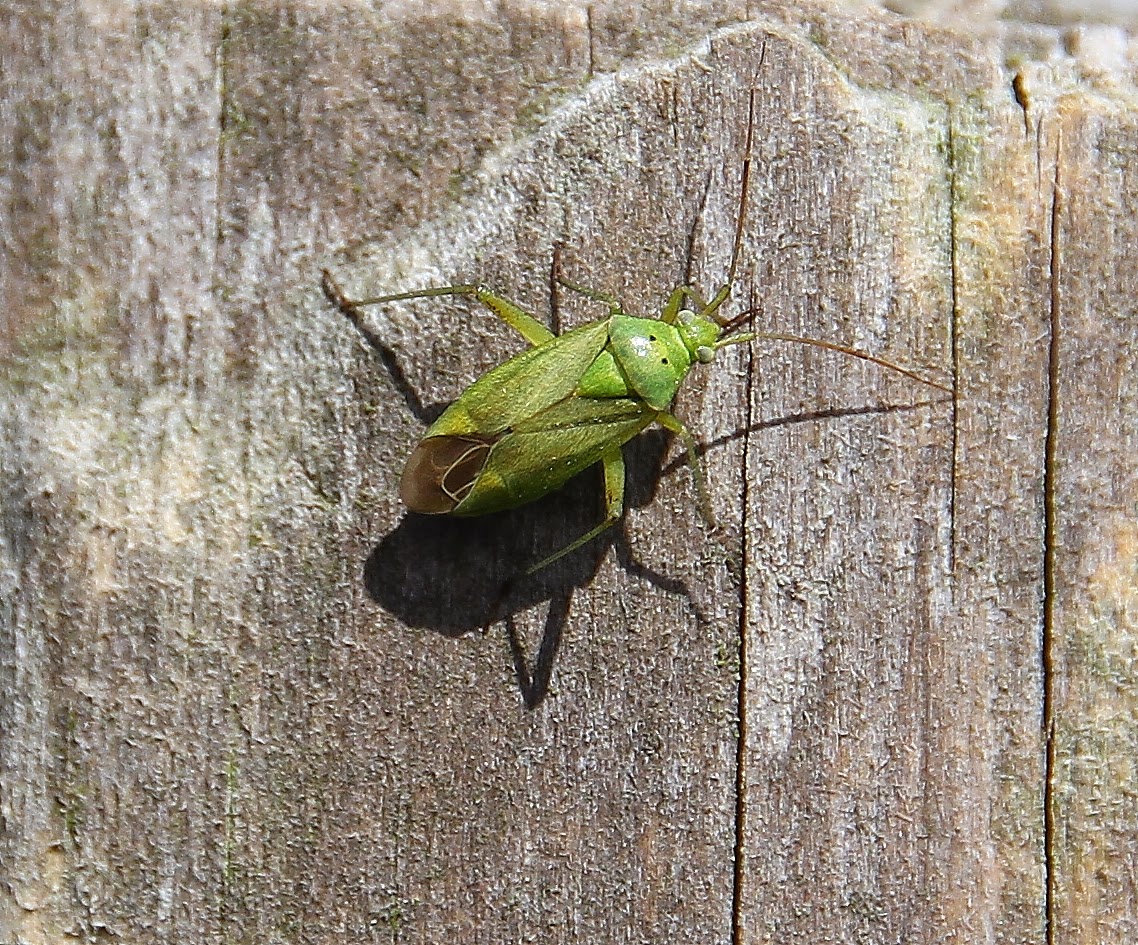The wind had dropped a bit from the previous day's searching for the continental Swallowtails at St Aldhelms Head, so I was back out again looking. I've already covered my success in seeing one in a previous Swallowtail post, but I didn't get chance to cover the other views & wildlife seen on the 2nd. So here goes. With more detailed directions from George Green on where he had seen his Swallowtail on the 30 June, I was back to look on the coastal footpath between Chapmans Pool & St Aldhelms Head. Chapmans Pool is the valley immediately West of St Aldhelms Head. After parking at the National Trust car park at Renscombe Farm, I took the diagonal path across the tops of the fields to get to the coast path. This is the quickest way, but it misses out the best birding parts of the Chapmans Pool valley. But today was all about the Swallowtails and not general migration birding. Walking along the top of the valley quickly brought me to the Royal Marines Memorial. It's a great place to spend a few minutes & enjoy the views, but also to remember the good work the Marines have done over the years to keep the UK safe. It's well located given there is a sizable Marines base in Poole & it's not uncommon to see them out training locally on their ribs.
Along the Emmetts Hill path, there are patches of rough grassland, patches of Thistles as well as some great short grassland which have the best areas of ground hugging flowers.
The Royal Marines Memorial
The Royal Marines Memorial
From here it's possible to look down into the seaward end of the Chapmans Pool valley. There are some great views from the coast path in this area.
Looking West from near the Marines Memorial: No prizes for working out why Portland (in the far left of the photo) is one of the prime birding sites on the South Coast
Chapmans Pool: It's actually a sea cove. Like a mini Lulworth Cove, without the shops & houses
The Chapmans Pool clifftop path along Emmetts Hill looking from St Aldhelms: My Swallowtail was on the cliff top vegetation
Looking towards St Aldhelms: From Emmetts Hill clifftop path
The valley between St Aldhelms & Emmetts Hill: It's only a 70m ascent, but it is a best to enjoy the view part way up
Small Copper: A great small Butterfly
Dark Green Fritillary: I need to get better photos, but was happy given the other two I saw I lost in flight without seeing where they went
Dark Green Fritillary
Swallowtail: Continental subspecies. Couldn't resist sneaking this back into the post. After all it was the reason for the visit. This is Individual B (as detailed in my Swallowtail mug shot post)
Wall: Another of my favourite Butterflies
Boat Bug Enoplops scapha: A member of the Shieldbug family
Potato Capsid: I had thought this would be a Shieldbug nymph, but couldn't find it in my Shieldbug book. So ended up putting the photo on iSpot for some help. Within a few minutes a Yorkshire based wildlife ranger called Colin had responded with Potato Capsid which seems to fit the bill (thanks Colin). This is a common & widespread species of meadows & hedgerows in the UK. Whilst not a Shieldbug, it is in the Capsid Bug (Miridae) family in the suborder Heteroptera. The Heteroptera suborder also contains the Shieldbugs family along with another 40,000 species of Bugs (around the world)
I returned to St Aldhelms for a longer look at the Swallowtails a few days later on the 6 July. I was focusing so much on the Swallowtails (see the Swallowtail mug shot post), that the camera wasn't used to photograph much else. However, I did see 3 different Swallowtails that day, including the Individual B which was now looking a lot more worn.
Swallowtail: Continental subspecies. Individual D
Swallowtail: Continental subspecies. Individual E
Butterfly twitchers: At this point, the numbers of Butterfly twitchers (including myself) outnumbered the walkers 8 to 1
Additionally, I did managed to photograph a tatty Wall Butterfly, a Shieldbug & a Capsid Bug which I mistook for a Shieldbug. Boat Bug Enoplops scapha: A member of the Shieldbug family
Potato Capsid: I had thought this would be a Shieldbug nymph, but couldn't find it in my Shieldbug book. So ended up putting the photo on iSpot for some help. Within a few minutes a Yorkshire based wildlife ranger called Colin had responded with Potato Capsid which seems to fit the bill (thanks Colin). This is a common & widespread species of meadows & hedgerows in the UK. Whilst not a Shieldbug, it is in the Capsid Bug (Miridae) family in the suborder Heteroptera. The Heteroptera suborder also contains the Shieldbugs family along with another 40,000 species of Bugs (around the world)

















